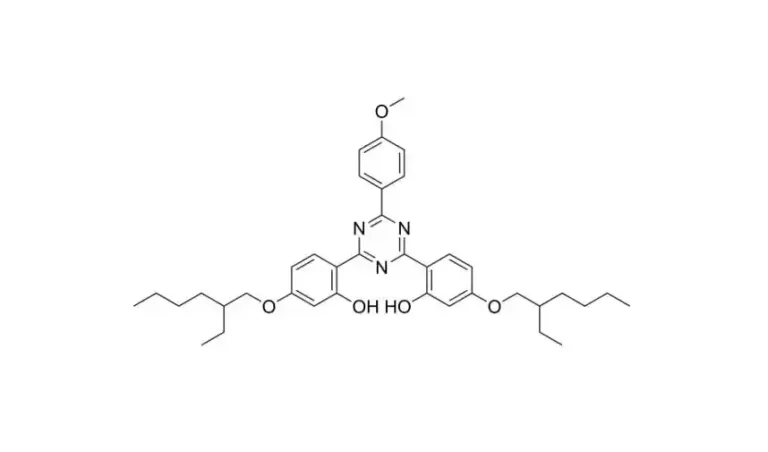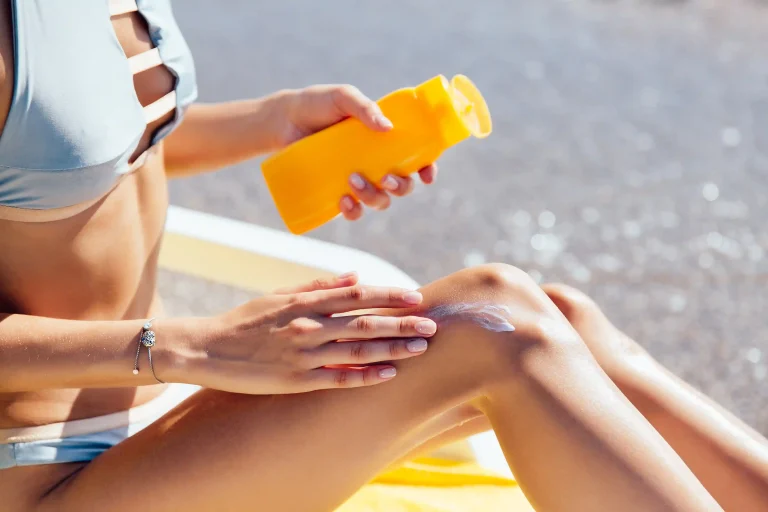Imaginez-vous planifier une journée ensoleillée sur la plage ou une randonnée en montagne. Vous prenez votre écran solaire, mais puis vous vous arrêtez - dioxyde de titane ou oxyde de zinc? Lequel est le meilleur pour votre peau ? Les deux sont des étoiles dans les crèmes solaires minéraux, connus pour leur sécurité et leur puissance contre les rayons UV. Mais ils ne sont pas les mêmes. À BFPNous sommes experts dans la fourniture de dioxyde de titane et d'oxyde de zinc de haute qualité pour les fabricants de crèmes solaires. Plongeons dans ce qui les distingue afin que vous puissiez choisir le bon pour vous.

Composition et caractéristiques de la crème solaire de dioxyde de titane
Vous vous êtes déjà demandé comment la crème solaire maintient les rayons UV à la baie? Le dioxyde de titane est assis sur votre peau comme un miroir, réfléchissant ces rayons. Son talent pour plier la lumière le rend excellent pour diffuser les UV. De plus, avec de minuscules particules dans des produits comme notre Dioxyde de titane BFP-T10AHSVous obtenez moins de ce regard blanc creissé. Il est plus lisse et semble mieux sur votre peau.
Composition et caractéristiques de la crème solaire oxyde de zinc
Les propriétés chimiques de l'oxyde de zinc
L'oxyde de zinc (ZnO) est un autre joyau naturel. C’est une poudre blanche qui non seulement bloque les rayons UV, mais calme également votre peau. Vous avez une petite irritation ? L'oxyde de zinc pourrait aider à l'apaiser. Notre Oxyde de zinc BFP-Z40S est fabriqué avec des particules constantes et une grande pureté, il fonctionne donc parfaitement dans les recettes de crème solaire.
Comment fonctionne l'oxyde de zinc comme filtre UV
L’oxyde de zinc est comme un super-héros pour votre peau. Il réfléchit les rayons UV et absorbe une partie de leur énergie, couvrant à la fois les rayons UVA et UVB. Cela en fait un choix privilégié pour une protection complète. Il est également super doux, c’est pourquoi vous le verrez dans les crèmes solaires pour bébés ou les types de peau sensibles. Il vous maintient en sécurité sans provoquer de rougeur.
Comparaison des capacités de protection UV
Lorsque vous choisissez une crème solaire, vous voulez savoir à quel point elle protège contre les rayons UV. Voici un aperçu rapide de la façon dont le dioxyde de titane et l'oxyde de zinc s'empilent:
| Fonctionnalité | Dioxyde de titane | Oxyde de zinc |
| Protection UVA | Décent, mais moins étendu que l'oxyde de zinc | Excellent, couvre tous les rayons UVA |
| Protection contre les UVB | Très fort | Très fort |
| Couverture du spectre | Principalement UVB, quelques UVA | Gamme complète UVA et UVB |
Efficacité contre les rayons UVA
Les rayons UVA pénètrent profondément dans votre peau, accélérant les rides et augmentant les risques de cancer. L'oxyde de zinc est le champion ici - il bloque toute la gamme UVA (320-400 nm). Le dioxyde de titane fait un travail solide, mais il n’est pas aussi fort contre les rayons UVA plus longs. Vous voulez le meilleur bouclier UV? Allez pour l'oxyde de zinc ou un mélange des deux.
Efficacité contre les rayons UVB
Les rayons UVB sont ceux qui brûlent votre peau et peuvent conduire au cancer de la peau. Bonne nouvelle: le dioxyde de titane et l'oxyde de zinc sont incroyables pour arrêter les rayons UVB (290-320 nm). Le dioxyde de titane les disperse comme un pro, tandis que l'oxyde de zinc les disperse et les absorbe. De toute façon, vous êtes couvert.
Compatibilité et adéquation de la peau
Votre peau est unique: grasse, sèche, sensible ou quelque part entre. Alors, quel écran solaire correspond à votre vibe? Allons le briser.
Dioxyde de titane pour différents types de peau
Le dioxyde de titane est un ami de la plupart des types de peau. Vous avez une peau grasse ou sujette à l'acné? Il ne bouchera pas vos pores. Il est également idéal pour la peau normale ou mixte. Si votre peau est super sensible, cependant, vous pourriez vouloir des particules plus fines, comme dans notre dioxyde de titane BFP-T10AHS. Ils gardent l'irritation à bay tout en vous protégeant.

Oxyde de zinc pour les peaux sensibles
Si votre peau devient facilement cranky, l’oxyde de zinc est votre go-to. Il est si doux qu’il est utilisé dans les crèmes solaires pour bébés et pour des conditions comme l’eczéma. Il calme tout en protégeant, ce qui en fait un favori des dermatologues. Notre oxyde de zinc BFP-Z40S est conçu pour être gentil mais puissant, gardant la peau sensible heureuse.
Impact environnemental des deux écrans solaires
De nos jours, nous voulons tous protéger notre planète autant que notre peau. Les crèmes solaires minéraux comme le dioxyde de titane et l'oxyde de zinc sont généralement plus gentils avec la nature que les produits chimiques. Mais il y a plus à l’histoire.
Considérations relatives à la biodégradabilité et à la sécurité maritime
Contrairement aux crèmes solaires chimiques, ceux minéraux ne fuient pas de substances nocives dans les océans. C’est une victoire pour la vie marine ! Mais voici le problème : de minuscules particules (nano) pourraient stresser les récifs coralliens. Les versions non nano sont plus sûres. Chez BFP, nous approvisionnons et fabriquons nos produits avec soin, en veillant à ce qu’ils soient aussi respectueux de l’environnement que possible.
Lignes directrices réglementaires sur les effets environnementaux
La FDA et l'UE ont des règles strictes pour les ingrédients de la crème solaire. Tant le dioxyde de titane que l'oxyde de zinc sont étiquetés comme sûrs et efficaces. Des endroits comme Hawaï interdisent certains écrans solaires chimiques mais permettent ceux minéraux, montrant leur côté plus vert. Nous respectons ces normes, de sorte que nos produits sont respectueux de la planète et conformes.
Différences cosmétiques et applications
Personne ne veut une crème solaire qui semble grossière ou étrange. Comment ces deux se comparent-ils lorsque vous les frottez ?
Texture et apparence sur la peau
Le dioxyde de titane peut laisser un film blanc faible, en particulier dans les formules plus épaisses. Mais notre BFP-T10AHL de dioxyde de titane utilise de minuscules particules pour réduire cette vibration creuse. L'oxyde de zinc peut aussi sembler blanc, mais il se mélange mieux, en particulier sur les teintes de peau plus foncées, donnant une finition plus naturelle.
Facilité d'application et mélangeabilité
Les crèmes solaires en oxyde de zinc peuvent se sentir un peu lourds, ce qui les rend plus difficiles à frotter, mais cette épaisseur crée un bouclier fort. Le dioxyde de titane, en particulier avec de petites particules, est plus léger et plus lisse. Vous préférez une application rapide et facile ? Le titane peut être votre choix. Vous voulez une barrière robuste ? Le zinc vous a.
BFP: Un fournisseur de confiance pour les ingrédients de crème solaire
À BFPNous sommes passionnés par la fourniture de dioxyde de titane et d'oxyde de zinc de première classe aux fabricants de crèmes solaires dans le monde entier. Avec plus de 20 ans dans le jeu, nous sommes tous sur la qualité, la confiance et des idées nouvelles.
Expertise dans la fourniture de produits de dioxyde de titane et d'oxyde de zinc de haute qualité
Nos produits, comme le dioxyde de titane BFP-T10AHL et l'oxyde de zinc BFP-Z40S, sont conçus pour une protection UV incroyable et un mélange facile. Ils font ressortir votre crème solaire, que vous soyez conçu pour la peau sensible ou pour une utilisation quotidienne.
Engagement envers les normes de qualité et la durabilité
La qualité est notre chose. Nous exécutons des contrôles rigoureux pour nous assurer que chaque lot est pur et fonctionne excellentement. Nous nous soucions également de l’environnement, en achetant des matériaux de manière responsable pour garder notre empreinte petite. Curieux de savoir comment nous pouvons aider votre ligne de crème solaire? Contactez-nous pour découvrir.
Conclusion: Choisir le bon écran solaire en fonction de vos besoins
Alors, dioxyde de titane ou oxyde de zinc ? Ça dépend de vous. Si vous voulez quelque chose de léger avec une protection UV solide, le dioxyde de titane est votre match. Vous avez une peau sensible ou avez besoin d'une couverture UV complète? L'oxyde de zinc est la voie à suivre. De nombreux écrans solaires mélangent les deux pour le meilleur des deux mondes. Chez BFP, nous sommes là pour vous aider à créer des produits incroyables avec nos ingrédients premium.
FAQ
Q1 Quels sont les principaux avantages de l'utilisation de crèmes solaires à base de minéraux?
A1 Crèmes solaires minéraux avec dioxyde de titane ou d'oxyde de zinc bloquent les rayons UV sans s'enfoncer dans votre peau. Cela réduit l’irritation, ce qui les rend parfaits pour les personnes sensibles. Ils sont également plus respectueux de l’environnement et commencent à protéger le moment où vous les appliquez – pas d’attente nécessaire.
Q2 Peut-on combiner le dioxyde de titane et l'oxyde de zinc dans un seul écran solaire?
A2 tout à fait ! Les mélanger est une démarche intelligente pour les crèmes solaires de première classe. Le dioxyde de titane traite les rayons UVB comme un champion, tandis que l'oxyde de zinc s'attaque aux rayons UVA. Ensemble, ils vous offrent une couverture complète. Notre dioxyde de titane BFP-T10AHS et oxyde de zinc BFP-Z40S sont fabriqués pour travailler ensemble en douceur.
Q3 Ces crèmes solaires sont-ils sûrs pour une utilisation quotidienne?
A3 Oui, ils sont en sécurité tous les jours! La FDA affirme que le dioxyde de titane et l'oxyde de zinc sont doux et efficaces. Ils ne sont pas irritants, ils sont donc idéaux pour les enfants, les adultes ou toute personne ayant une peau sensible. Mettez-les sur régulièrement pour une protection constante.




